How to make the right birdhouse with your own hands: types, sizes, drawings, instructions
The question often arises: why make a birdhouse with your own hands if you can buy a ready-made one.Probably because housing for birds, built according to the classical design, is much more convenient than low-quality products, but at an affordable price. In addition, this is also a good way to do homework for school. These are not just crafts, often these are real projects with calculations and new ideas.
The content of the article:
What material is best for a birdhouse?
Housing for birds cannot be made from the first material that comes to hand. Fans of bird watching can confirm that all of them, be it a starling, a sparrow, or a tit, avoid cold materials with strong odors.
Wood is best, in any form, but preferably not plywood or OSB just bought at the nearest hardware store. They can also be used for roofing, but before construction, the sheets will need to be washed with water, dried and allowed to lie in the sun so that the smell of phenol disappears.
The best materials for building a birdhouse:
- The boards are untreated and naturally dried. You can use old ones, with numerous holes from nails and screws. It is clear that the fasteners must be removed before construction. You cannot use varnished, painted or etched boards from any containers or pallets.
- OSB is ordinary, non-waterproof, without impregnation.
- Thick cardboard or fiberboard.
- Glued plywood without waterproof impregnations.
- Terrace board. It will go to the roof or bottom of the birdhouse.
- 5 liter PET bottles for packaged drinking water.
It is clear that there should have been only water in the container. It makes no sense to make a birdhouse from a bottle in which oil, beer, milk, gasoline, or any chemicals were stored. The bottle is used as a repair liner inside an old birdhouse.
Birds are good at distinguishing odors, so the material for building a birdhouse must be clean. The most dangerous are chipboard and “fresh” plywood. They have a very high phenolic index. This must be remembered before making a birdhouse. The box will turn out to be very beautiful, but birds will avoid such housing. For the roof, you can use old, but not yet delaminated plywood.
It is also not recommended to use without preparation any boards or plywood that have been stored in the apartment for some time, a year or six months. Especially if there are pets in the house. Such material must first be washed and allowed to air in the sun for at least a week.
You can often find step-by-step instructions for making dugouts from a hollow tree, as in the video:
The dugout is almost invisible in tree branches, but only for humans. Cats, squirrels, ferrets, and birds of prey easily find nesting sites by smell. Therefore, a dugout is not the best birdhouse design for building with your own hands.
Cardboard (only brown corrugated packaging) is used mainly as insulation inside the box. Old birdhouses do not need to be disassembled into parts, but simply put cardboard packaging inside.
Advice! To cut blanks for a birdhouse, it is advisable to use hand tools: a hacksaw, a drill, a brace.Power tools often get grease on the cutting edge, leaving an unpleasant odor for birds.
If birdhouses are planned to be installed in the garden on fruit trees, then the treatment of crowns, branches, and foliage with chemicals will have to be abandoned until the chicks fly. If the birds have already settled into the birdhouse, removing the box, covering it with film and trying to fix anything in the structure is strictly prohibited.
To build a birdhouse with your own hands, a regular edged board 20-25 mm thick, sanded or untreated, is best suited. It is better not to use coniferous wood because of the resin. The best option is to build from birch or aspen.
The worst birdhouse is made from scrap materials. It is better not to experiment with MDF, chipboard, OSB, fiberboard, but to buy a normal birch board. Moreover, not much lumber is needed to build housing for starlings.
Schemes and drawings of birdhouses
There are quite a few options for bird houses. Many designs appear arbitrarily, in the process of children's or teenagers' creativity. But despite the abundance of schemes, only a few have taken root in practice. If an unusual design option is not required, then it is best to build a birdhouse in the shape of a rectangular box with a simple roof.
Classic version
A rectangular birdhouse (parallelepiped) with a flat sloping roof made of the same material as the body.
The entrance hole - a taphole (45 mm in diameter) - is cut on the front wall at a height of 90 mm from the roof. It is believed that, taking into account the front overhang of the roof of 70 mm, this is enough to protect the inhabitants of the birdhouse from an attack by a cat or squirrel.
The birdhouse does not have a perch.This is also one of the ways to protect the inhabitants of the birdhouse from natural enemies. Birds easily get used to the size of the entrance and can easily do without a perch, while cats and ferrets will not be able to climb from the roof into the birdhouse.
The depth of the house is 160 mm. This is the minimum distance that guarantees protection of starlings from rain and wind. The roof slope can be made larger, and the overhang can be increased to 100 mm. But you shouldn’t make it too big; the roof will interfere when installed on a tree.
Pioneer version with removable roof
The simplest scheme is with a flat roof. Previously, birdhouses were built according to this drawing during labor education classes. Nevertheless, the design remains popular for installation within urban areas.
A distinctive feature of the birdhouse is its flat horizontal roof 150x200 mm. It is attached to the body using a tenon bar. That is, the roof can be removed if necessary to sanitize the interior space.
Such a birdhouse can be installed on the loggia of the first or second floor, on a free-standing rod or on the wall of the house. Installation on trees or a fence is not recommended; the level of protection of the “pioneer” birdhouse is much lower than that of the classic design.
Birdhouse-house with a gable roof
The most complex structure to build, but at the same time the safest. The birdhouse has a roof with two slopes, inclined at a large angle. Protruding overhangs and a large roof angle provide good protection against cats and ferrets, but are practically useless against woodpeckers.
The salvation from birds of prey is a large depth - 160 mm, but it cannot be done more, since the chicks will not be able to get out of the box.In some models, the bottom and roof are made removable so that at the end of the summer season it can be sanitized with a “White” solution. The product kills ticks and parasites well, is practically harmless to birds, and the smell goes away within two weeks after sanitation.
In addition, the model has a more attractive design; it is often installed next to the mailbox under the porch roof or on the fence of the house.
Regardless of the design of the body, one general rule applies to all types of birdhouses. In winter, they need to be removed, processed, dried and hidden in a heated room until February-March next year.
The reason is quite simple - unpainted wood does not tolerate moisture, frost, or strong winds well, so the walls and roof often become covered with cracks. If the birdhouse is made of plywood, then the material quickly delaminates. In addition, crows or squirrels can “rent” the house.
Step-by-step instruction
To build a birdhouse with a flat roof you will need:
- board 20x130 cm;
- hand saw, screwdriver;
- ring and center drill;
- fastener
If the board is too dry, you will need to stock up on a 2.5-3 mm drill. It will be needed to pre-drill a hole for the self-tapping screw.
How to fasten
Usually, when making small crafts from wood, without thinking, they use black carpentry screws 15-25 mm long. But in the case of a birdhouse, black fasteners will not work; it is better to use yellow screws.
Thanks to the protective coating (zinc + cadmium), they do not rust even on the roof, which means the starling house will last for quite a long time.
Cutting the material
To build it, you will need to cut the board as shown in the birdhouse drawing.You will need to cut carefully, the ends of the workpieces must be perpendicular to the plane of the workpieces, otherwise after assembling the house, huge gaps will form at the joints.
A taphole hole is immediately marked in the front wall blank and a hole is drilled with a ring drill.
After drilling, you need to chamfer the edge of the hole so that the birds do not injure their paws. If possible, it is necessary to remove all burrs on the ends and sides of the roof.
When marking is done correctly, the board material is consumed quite economically.
Assembling a birdhouse
Now we connect the back wall with the side. Before tightening the fasteners, the side frame must be supported on a stand, and centering holes must be drilled in the places where the screws are screwed in.
The thickness of the board is only 25 mm, so it is necessary to drill, otherwise you can split the wood.
Next, we screw on the second wall and the front board of the birdhouse. Then the roof is sewn on. In addition to the canopy over the entrance, you will need to make a small overhang over the back wall; it will be useful later in preparation for attaching the birdhouse to the tree.
On the facade in front of the entrance we sew a small perch. Its dimensions have been reduced to a minimum. The shape has changed - instead of the traditional pin, a shelf of reduced dimensions is used.
This design does not allow large birds to perch: magpies, crows, eagle owls.
Lastly, the bottom is nailed down; it is made recessed into the body of the house. The bottom part is attached with only two self-tapping screws, so if necessary, the bottom can be easily pulled out of the body.
Features of building a birdhouse with a double roof
In general, the technology of a house with a gable roof is the same as that of the classic version. The only difference is the roof assembly sequence:
- First, we attach one of the ramps to the body of the birdhouse. The edge should coincide with the roof ridge.
- We lay the second slope on the body with an overlap on the end of the previously laid one. The self-tapping screw will have to be screwed across the grain of the wood, so you need to pre-drill the hole.
- The next two self-tapping screws are screwed into the roof so that they fit into the back and front (front) walls of the birdhouse.
Points for fasteners must be made with a centering drill. Then deepen with a thin drill 50 mm. Only after this can you screw in the screw. If you try to screw it in without preparation, the screw will go askew and come out on the outer or inner surface of the body.
Another feature is that when planning a birdhouse with a gable roof, it is better to make the eaves and overhangs with an overhang increased to 70-80 mm. This will protect the front wall from getting wet during rain.
There is no need to seal seams and joints. If you plan to install the birdhouse in the sun, then in the upper part of the back wall (under the roof itself) you will need to make a ventilation hole and cover it with a mesh.
At the final stage, it is necessary to attach a vertical rail to the back wall. This will be the stand for installing the house. The weight of the box with roof will be at least 1.5-2 kg, depending on the thickness of the walls and the size of the roof.
Therefore, to make a stand, select a rail with a cross-section of at least 40x40 mm, preferably pine or spruce. The rail is laid “on the back” of the birdhouse so that the upper edge (end) rests against the rear slope of the roof, after which it is secured with 50 mm self-tapping screws.
Where is the best place to hang it?
Once assembly is complete, the outer surface of the box can be sanded with a hand-held machine to remove edges and make the wood smoother.Garden birdhouses are not painted; if the installation element, for example, is located in front of the gate to the local area, then it is better to paint the box and roof, using acrylic paint.
No one will rent a house for starlings for the winter; it will stand in the yard for many years. But in case birds settle in it (sparrows very often “visit”), it is still better to paint it with acrylic rather than nitro enamel.
Outdoor installation
Often, houses for starlings and other birds are deliberately installed next to trees, but separately from the crown. A fence post or an old trunk of a once withered tree (without crown and branches) can serve as a support.
It is not recommended to attach a garden birdhouse directly to a wooden support. You need to find a steel pipe, at least a meter long, maybe a water pipe. It is attached to a wooden support using steel wire, and the birdhouse itself is inserted inside and wedged with a couple of wedges.
Advice! No feeders or bottles of food should be installed under the birdhouse.
The height of a proper birdhouse at the ground level should be at least 2.5 m. A meter-long steel pipe ensures that no cat, ferret, weasel, much less a mouse, will reach the birdhouse.
But installation on a pole has one drawback: the walls of the house and the roof will become very hot under the sun's rays. Therefore, the outer surface is either sealed with light paper (but not foil), or the wood is bleached with hydrogen peroxide (bleach) at the construction stage.
Wood mounting
Installation in the crown of a tree is considered more common. The most difficult thing is to choose the right place for mounting. The best place is considered to be a fork between two thick horizontal branches extending from the trunk.
In this case, a jumper board is mounted (tied) between the branches, to which the stand is attached. It is important that there are no branches on the left, right, or below that could be used by predators as a support before attacking. The front wall with the entrance should be turned in the direction from the tree trunk.
In addition, two loops are wrapped around the roof and two or three stretches are made to large branches located above. Such a mount will withstand even the strongest winds and guarantees protection of birds from predators.
House wall
Birdhouses are often placed side by side directly on the brickwork of a private house. It is clear that in this case the house is not intended for starlings; they cannot stand being close to humans. A home birdhouse will most likely be inhabited by tits or, less commonly, swallows and swifts.
The box is simply nailed with dowels behind the vertical post. If the roof overhangs extend far enough, no additional action will be required. With short overhangs over the house, you will need to make a canopy. Otherwise, when it rains, the birdhouse will be flooded with water splashing out of the gutters. Usually this is a sheet of rubber or plastic sewn above the roof onto the wall above the house.
Results
Making a birdhouse with your own hands will not be difficult if you don’t skimp on materials and don’t try to give it an unusual shape or implement “new” design ideas. The standard classic birdhouse has been serving as a home for birds for decades, and no one has ever come up with anything better than the classics.
Tell us about your experience building houses. What mistakes should you avoid first? Also bookmark the article and share it on social networks.

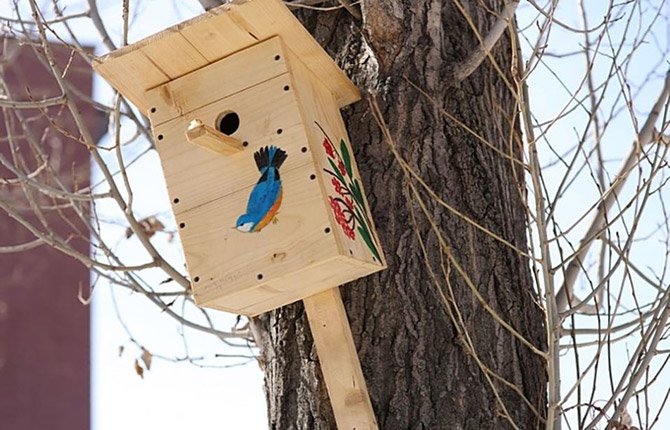



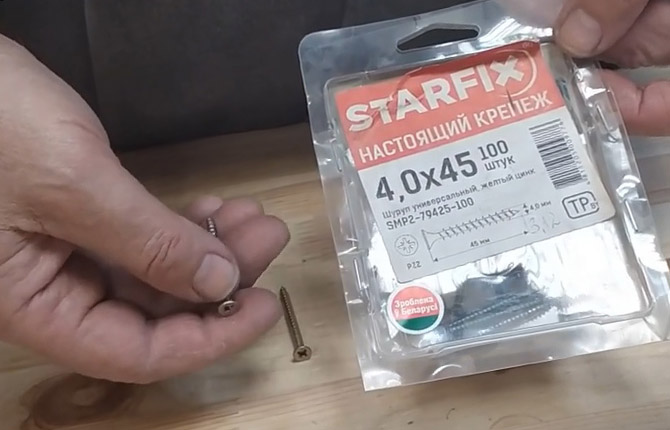




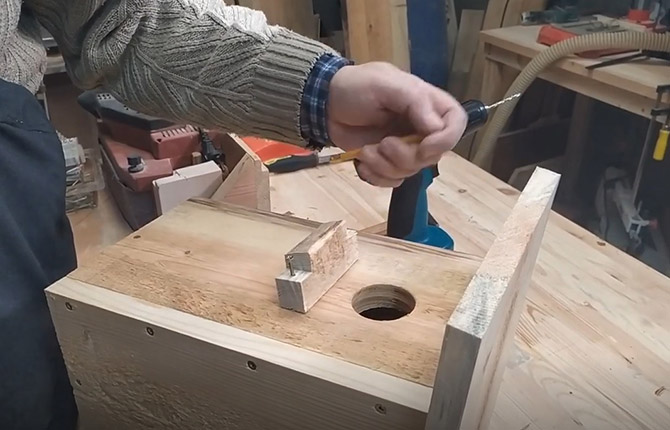


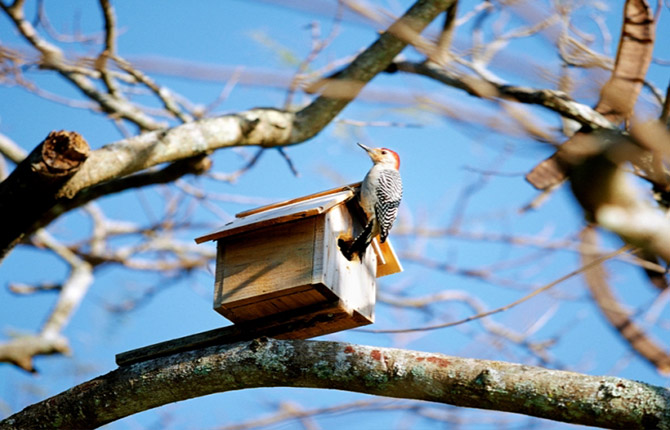

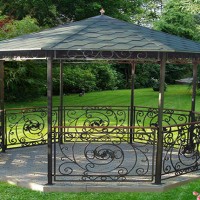
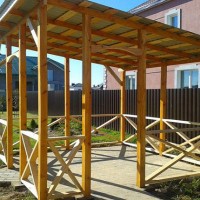
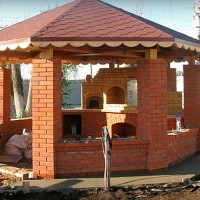
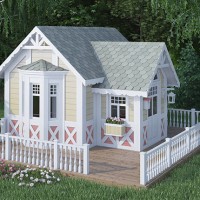

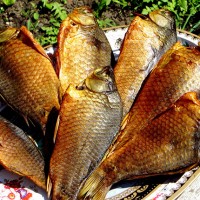




It is still better to stick a self-adhesive film on the roof. From my experience, I will say that most often birdhouses fall apart due to a cracked roof or back wall.
You can sell up to 100 birdhouses per season. These models are certainly cool, they take 3-4 pieces per garden. If it’s for children, then you need to color it with cartoon characters, for example, Cheburashka or Gena the crocodile. Plastic ones can be sold at most 4-5 pieces in two months.